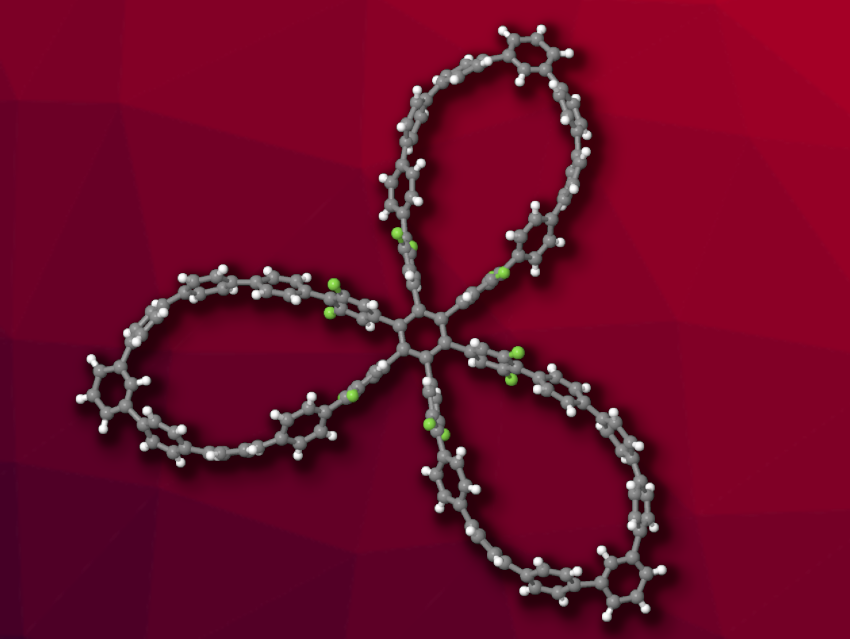Carbon nanostructures that are composed of curved aromatic hydrocarbons can have useful properties such as improved solubility compared with similar planar compounds. Building larger, more complex nanostructures from smaller curved aromatic hydrocarbons can lead to new properties and new potential applications. Cycloparaphenylenes ([n]CPPs with n phenylene units) are strained aromatic carbon “nanohoops”. They can serve as building blocks for larger structures.
Ramesh Jasti, University of Oregon, Eugene, USA, and colleagues have used CPPs with a single alkyne unit in the nanohoop as building blocks in train-promoted [2+2+2] cyclotrimerizations. The resulting products are large, soluble carbon nanostructures shaped like a pinwheel (example pictured). The team prepared alkyne CPPs with and without fluorine substituents next to the alkyne unit and in different sizes. These precursors were then trimerized using Pd2(dba)3 (tris(dibenzylideneacetone)dipalladium) as the catalyst. The pinwheel-like products were obtained in yields of 63–95 %.
The team found that the trimerization reaction was promoted by the strain of the alkyne CPPs. The synthesized trimers show high luminescence and generally good solubility. Overall, the method the researchers have developed provides access to new carbon nanostructures that could have applications in organic electronics, supramolecular chemistry, or porous materials.
- Pinwheel-like Curved Aromatics from the Cyclotrimerization of Strained Alkyne Cycloparaphenylenes,
Tara D. Clayton, Julia M. Fehr, Tavis W. Price, Lev N. Zakharov, Ramesh Jasti,
J. Am. Chem. Soc. 2024.
https://doi.org/10.1021/jacs.4c12272




